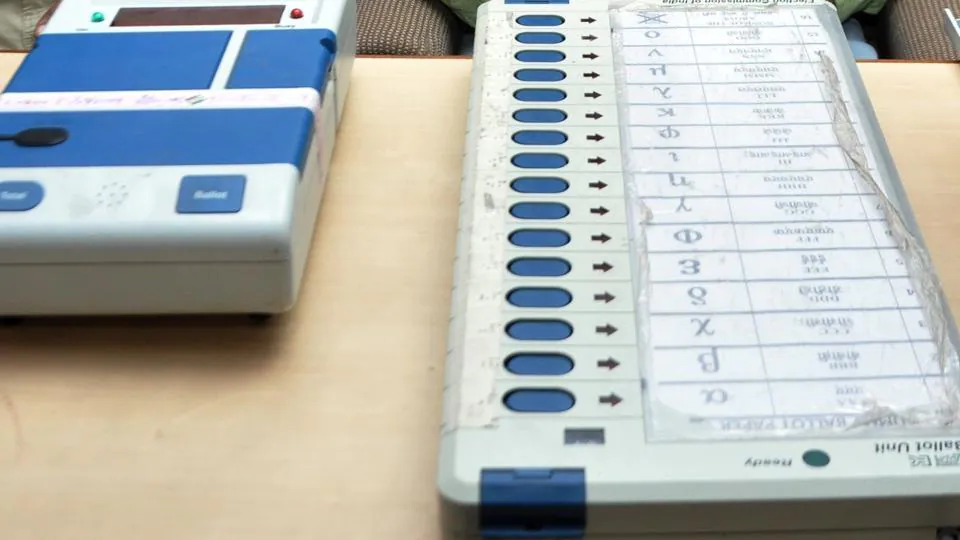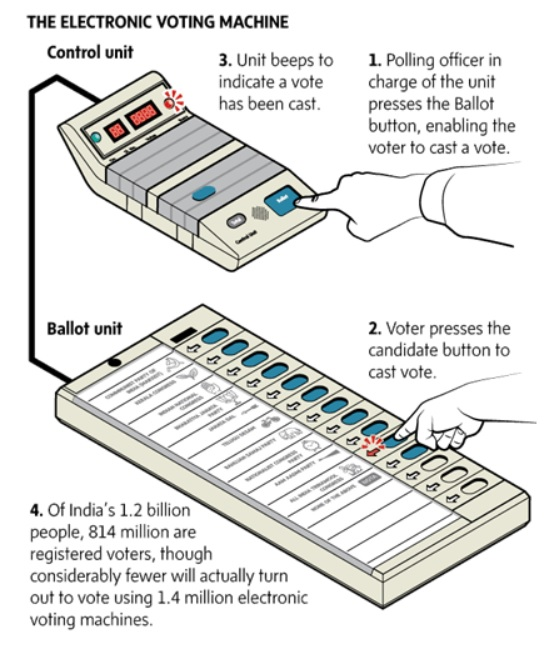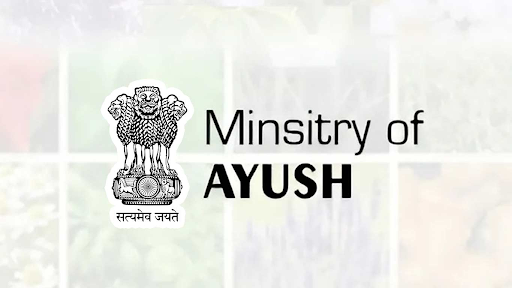Description

Copyright infringement not intended
Picture Courtesy: https://www.hindustantimes.com/lok-sabha-elections/lok-sabha-elections-2019-opposition-moves-ec-over-voting-machine-snags-pm-modi-attacks-those-casting-doubts/story-9u27gkWh2LbBdn3dGr4I5N.html
Context: Electronic Voting Machines (EVMs) were introduced in India in 1982 and fully deployed by 2004, but concerns remain over hacking vulnerabilities.
Electronic Voting Machines (EVMs)
- Electronic Voting Machines (EVMs) were introduced in India on a trial basis in 1982 during the Assembly constituency elections in Paravur, Kerala.
- They were subsequently deployed across all booths during the Assembly elections in Tamil Nadu, Kerala, Puducherry, and West Bengal in 2001.
- The EVMs saw nationwide implementation in the 2004 Lok Sabha elections, covering all 543 constituencies.

Concerns Raised activists and political parties regarding EVMs
- Susceptibility to Hacking: There have been allegations that EVMs are vulnerable to hacking due to their electronic nature. However, the Election Commission of India (ECI) has clarified that EVMs are standalone devices without external connectivity, making them secure from external interference.
- Lack of Transparency: Some argue that the EVM process lacks transparency, particularly in the verification and counting of votes. The current practice of matching only a small sample of VVPAT slips with EVM counts raises doubts about the accuracy and integrity of the electoral process.
- Scientific Criteria for Verification: The current method of randomly selecting a small sample (five per assembly constituency/segment) for matching with VVPAT slips is criticized for its lack of scientific basis. This approach may not adequately detect defective EVMs during counting.

Voting Practices in Other Countries
- Paper Ballots: Many Western democracies like England, France, the Netherlands, and the United States continue to use paper ballots for national or federal elections.
- Discontinuation of EVMs: Countries like Germany have declared the use of EVMs unconstitutional, leading to their discontinuation in elections.
- Selective Use of EVMs: Brazil is an example of a country that uses EVMs for elections.
Way Forward to address the concerns and strengthen the voting process
- Scientific Sample Matching: The sample size for matching EVM counts with VVPAT slips should be determined scientifically, potentially by dividing each state into larger regions. This approach would ensure greater accuracy and confidence in the counting process.
- Error Resolution: In case of any error detected during the verification process, a comprehensive counting of VVPAT slips for the affected region should be conducted, forming the basis for election results.
- Introduction of Totaliser Machines: Totaliser machines can be introduced to aggregate votes from multiple EVMs (15-20) before revealing candidate-wise counts. This measure would enhance voter privacy at the booth level and prevent profiling or intimidation based on booth-wise voting behaviour.
Conclusion
- By adopting scientific methods for sample matching, implementing error resolution protocols, and introducing totaliser machines for enhanced voter privacy, the electoral process in India can be made more robust and transparent. These reforms would enhance confidence in the electoral system and ensure the integrity of democratic processes.
Must Read Articles:
Electoral Reform
Major Committees on Electoral Reforms
VVPAT
Electronic Voting Machine (EVM)
Source:
The Hindu
|
PRACTICE QUESTION
Q. Discuss the challenges and complexities associated with the use of Electronic Voting Machines (EVMs) in Indian elections. How does the Election Commission ensure the security and integrity of EVMs during voting and counting processes, and what measures are in place to address concerns about tampering or malfunction?
|














